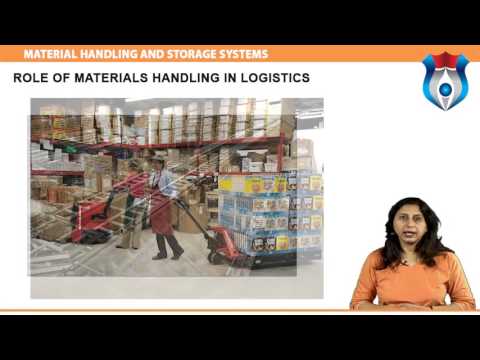Title: Safe Handling Machines: Ensuring Safety and Compliance in Machinery Operations
Description:
Introduction:
Welcome to our informative video on safe handling machines, where we delve into the importance of safety measures for both manufacturers and users. In this video, we provide a comprehensive overview of the technical and organizational measures that should be implemented to ensure safe handling of machines.
Video Content:
In this video, we explore the critical aspects of safe handling machines, emphasizing the need for manufacturers and users to prioritize safety. We discuss various measures, guidelines, and best practices that can be implemented to minimize risks and ensure compliance with safety regulations.
1. Understanding Safe Handling Machines:
– Definition and significance of safe handling machines
– Potential risks and hazards associated with improper handling
– Legal requirements and standards for safe machine operations
2. Technical Measures for Safe Handling:
– Importance of regular maintenance and inspections
– Ensuring proper machine installation and setup
– Implementing safety devices and protective measures
– Utilizing ergonomic designs for operator comfort and safety
3. Organizational Measures for Safe Handling:
– Developing comprehensive safety policies and procedures
– Providing appropriate training and education for machine operators
– Conducting risk assessments and implementing control measures
– Establishing clear communication channels for reporting potential hazards
4. Collaborative Efforts between Manufacturers and Users:
– Responsibilities of manufacturers in designing and producing safe machines
– Ensuring clear instructions and warnings are provided with the equipment
– User’s role in following operating procedures and reporting potential issues
– The importance of ongoing collaboration and feedback to improve machine safety
Call to Action:
If you found this video helpful, please consider liking, subscribing, and sharing it with others who may benefit from this valuable information. Stay informed and ensure the safety of your workplace with our future videos on related topics.
Additional Tags: safe handling machines, machinery safety, machine operations, compliance, risk management, safety guidelines, technical measures, organizational measures
Hashtags: #SafeHandlingMachines #MachinerySafety #Compliance #MachineOperations #RiskManagement
Title: Ensuring Safety in Machine Handling: A Comprehensive Guide
Introduction:
In any industrial setting, the safe handling of machines is of paramount importance to protect both workers and equipment. This guide aims to provide valuable insights and guidelines to enhance safety practices while handling machines, reducing the risk of accidents and injuries. By implementing the following recommendations, organizations can create a safe working environment for their employees and minimize potential hazards.
1. Conduct Thorough Risk Assessments:
Performing a comprehensive risk assessment is crucial before any machine operation. Identify potential hazards, evaluate the associated risks, and implement appropriate control measures to mitigate them. Regularly review and update these assessments to ensure continued safety.
2. Provide Adequate Training:
Ensure that all personnel involved in machine handling receive proper training on safety protocols, machinery operation, emergency procedures, and the correct usage of personal protective equipment (PPE). Regular training sessions and refresher courses should be conducted to reinforce safe handling practices.
3. Use Proper Personal Protective Equipment (PPE):
Make sure that all employees are equipped with appropriate PPE, such as safety goggles, gloves, helmets, earplugs, and steel-toed boots. Reinforce the importance of wearing PPE at all times when operating or working near machines.
4. Establish Clear Communication:
Maintain efficient communication channels among all employees involved in machine handling. Clear signage, safety labels, and warning signs should be displayed prominently near machines to ensure everyone understands the risks and safety precautions.
5. Implement Lockout/Tagout Procedures:
Develop and enforce lockout/tagout procedures to prevent accidental startups or releases of hazardous energy during maintenance or repair work. Ensure that all employees are trained in these procedures and strictly adhere to them.
6. Regular Maintenance and Inspections:
Establish a routine maintenance schedule for machines to ensure they are in optimal working condition. Conduct regular inspections to identify potential faults or wear and tear, and promptly address any issues to prevent accidents caused by equipment failure.
7. Encourage Reporting and Near-Miss Analysis:
Create a culture where employees feel comfortable reporting near-miss incidents or potential hazards. Analyze these reports to identify patterns or recurring issues, and take proactive measures to address them, preventing future accidents.
8. Promote Ergonomic Practices:
Educate employees on proper ergonomics, emphasizing the importance of correct body postures, lifting techniques, and the use of mechanical aids to reduce strain and the risk of musculoskeletal injuries.
9. Continuous Improvement:
Regularly review and update safety protocols, incorporating advancements in technology, industry best practices, and regulatory requirements. Encourage feedback from employees and involve them in the decision-making process to foster a culture of continuous improvement.
Conclusion:
Prioritizing safety in machine handling is vital to protect both personnel and machinery. By implementing the aforementioned guidelines, organizations can create a safe working environment, reduce accidents, and ensure the well-being of their employees. Remember, safety is a shared responsibility that requires constant vigilance and commitment from all stakeholders involved in machine handling.Handling Machine
#Safety #Handling #Machines



